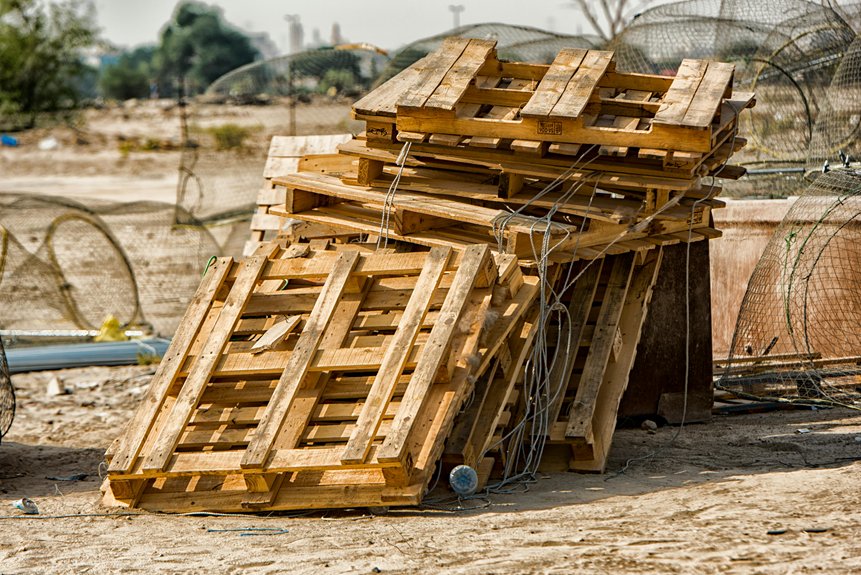Sustainable building materials encompass a variety of options, such as recycled steel, bio-based insulation, and innovative concretes that can absorb carbon dioxide during their production. These materials significantly reduce embodied carbon, enhance resource efficiency, and often contribute to improved durability.
In the UK, the market for sustainable building materials is expanding rapidly, driven by urbanisation and increasing environmental standards. Locally sourced and recyclable materials are becoming particularly popular among builders and architects committed to sustainability.
Opting for materials with transparent supply chains and low-maintenance characteristics ensures a responsible approach to construction.
Delving deeper into these subjects can yield valuable insights into the creation of environmentally friendly buildings, promoting a healthier planet for future generations.
Key Materials Transforming the Construction Industry
Recent advances in construction materials are fundamentally transforming the design and building of structures. Innovative materials, such as carbon-storing concrete and bio-cement, significantly reduce greenhouse gas emissions by capturing CO₂ during their production. Bio-cement, which employs bacteria to generate calcium carbonate at room temperature, is particularly energy-efficient. Additionally, aggregates sourced from seawater have the capacity to absorb CO₂, positioning concrete as a net carbon sink. Seawater-based aggregates are increasingly being utilized, further enhancing the sustainability profile of concrete. Mass timber, including cross-laminated timber, provides a lightweight and sustainable alternative to traditional building materials while sequestering carbon throughout the growth of trees. This enables the construction of taller buildings with a reduced environmental footprint. Furthermore, bio-based insulations, made from materials like grass fibres and cork, offer low-impact, eco-friendly options for thermal performance. High-performance materials, such as crack-resistant concrete and carbon fibre reinforcement, enhance durability while minimising weight. These innovative materials don’t necessitate significant alterations to construction practices, making it simpler for builders to embrace sustainable methods. As a result, this shift not only promotes greener structures but also cultivates a sense of community within the built environment.
Environmental Benefits and Sustainability Criteria
Sustainable building materials provide considerable environmental advantages by enhancing resource efficiency and minimising the consumption of finite natural resources. By utilising recycled content, these materials contribute to the conservation of natural resources while significantly reducing energy expenditure during production. Additionally, these materials often incorporate innovations such as low-emission finishes and non-toxic components that improve indoor environmental quality. This not only lowers greenhouse gas emissions but also diminishes pollution, waste, and environmental harm throughout their entire life cycle, from construction to demolition. Buildings that incorporate resilient and sustainable materials tend to be more durable, which can lead to cost savings over time through reduced utility expenses and fewer repairs. Moreover, such materials aid communities in recovering more swiftly following natural disasters, such as floods and earthquakes. To ensure genuine sustainability, materials are assessed based on their environmental impact, local availability, recyclability, and durability. Certifications such as LEED and BREEAM play a crucial role in upholding high sustainability standards across various projects, ensuring that the built environment contributes positively to both people and the planet.
Market Trends and Growth Drivers
The market for green building materials is witnessing substantial growth, fuelled by an increasing demand for environmentally friendly construction options across the globe. The global market is anticipated to expand significantly, with a robust compound annual growth rate. The adoption of recycled and reclaimed materials, such as steel and wood, is also playing a vital role. Key drivers include the rising utilisation of sustainable structural materials such as timber, recycled steel, and innovative concretes that capture carbon emissions. Commercial buildings and refurbishment projects are major contributors to this growth, spurred on by urbanisation and evolving environmental standards. Regions like Asia Pacific are among the fastest-growing, while North America continues to hold a significant share of the market. Advancements in technology, including carbon-storing concretes and prefabricated timber solutions, are further propelling the industry’s expansion.
Considerations for Choosing Sustainable Building Materials
Choosing sustainable building materials involves careful consideration of various factors to ensure that both environmental and performance objectives are achieved.
First and foremost, it is vital to assess the environmental impact of materials, opting for those with low embodied carbon, high recyclability, and responsible sourcing. Employing Life Cycle Assessment (LCA) tools can aid in evaluating the total impact from extraction through to disposal.
Additionally, selecting durable and low-maintenance materials not only extends their lifespan but also reduces resource consumption over time. Sourcing materials locally can significantly decrease transportation emissions while bolstering the local economy.
It is also essential to choose suppliers who maintain transparent supply chains and demonstrate a commitment to environmental responsibility, as this adds credibility to the sourcing process. Finally, prioritising materials that are designed for reuse or recycling contributes to a circular economy, promoting sustainability in construction practices.
| Consideration | Benefit |
|---|---|
| Local sourcing | Reduces emissions and supports the local economy |
| Recyclable materials | Limits resource depletion and encourages reuse |
| Durability and low-maintenance | Extends lifespan and lowers maintenance costs |
| Transparent supply chain | Ensures responsible sourcing and maintains environmental integrity |
Conclusion
Sustainable building materials are revolutionising the construction industry by providing significant environmental advantages and fostering market expansion. These materials encompass a range of options, including recycled metals, bamboo, and eco-friendly concrete, which help to diminish ecological impact while satisfying durability requirements.
When builders select sustainable materials, they take into account various aspects such as cost, availability, and performance. By opting for environmentally responsible choices, the construction sector can effectively reduce its ecological footprint and promote long-term environmental health. This commitment ensures the development of greener, more resilient buildings for future generations.
The adoption of sustainable materials not only enhances the aesthetic appeal of structures but also contributes to energy efficiency and reduced carbon emissions. As the demand for eco-friendly solutions continues to rise, the construction industry stands at the forefront of innovation, paving the way for a more sustainable future.

